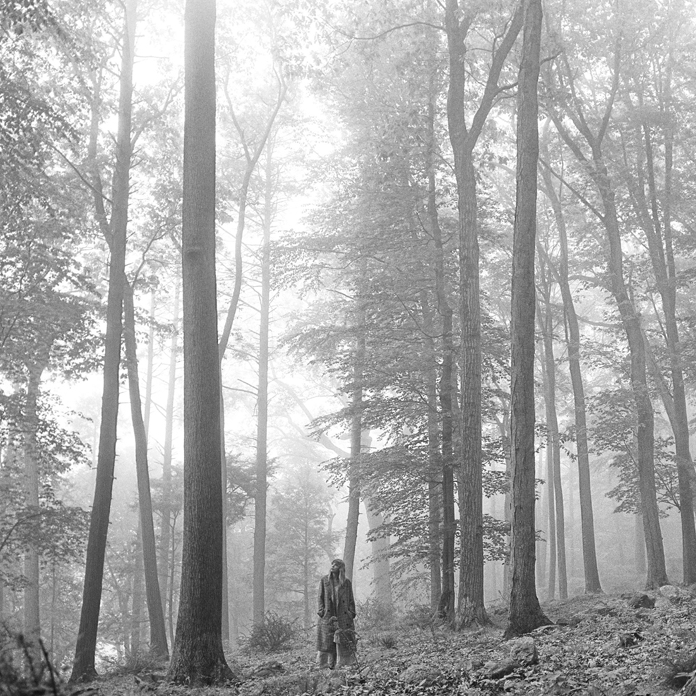
Folklore
Republic
Jul 29, 2020
Web Exclusive
![]()
Taylor Swift is a master of bombastic media campaigns. Whether her lead singles were pop earworm mastery, such as “Shake It Off,” or a pastel self-love anthem such as 2019’s “Me!” all provided ostentatious introductions to titanic album rollouts. The release of a new Taylor Swift record has typically been anything but unexpected.
Yet Folklore is instantly a more muted affair. Announced only a day prior to release, the album is accompanied by a monochromatic art style and a list of indie veterans as collaborators, forgoing most of Swift’s pop heavyweights (with the exception of Jack Antonoff). Quarantine resulted in an unexpected creative outpour for Swift, allowing her to create without the burden of expectation and committees that usually accompany superstar releases.
The result is unexpectedly unadorned and refreshingly authentic. The songs on Folklore channel a autumnal folk sound, putting the focus on Swift’s songwriting and vocals. For an artist as image conscious as Swift, it is surprising to hear her so bare. On many songs, such as “epiphany” and “hoax,” Swift is only accompanied only by piano, deft percussion, and touches of strings.
Even in her earliest teenage years there was a glossy sheen and calculated “girl next door” demeanor to Swift’s music. All that is gone now, giving the record a warm and lived in feeling, like the titular item in “cardigan.” Some credit certainly can be given to Aaron Dessner of The National who took on production on 11 of the 16 tracks, but Swift does not conjure The National or Bon Iver on Folklore. To see the record in terms of Taylor Swift’s attempt at an “indie” album would be reductive as well. Folklore doesn’t sound like a calculated indie turn but a rare work of near complete authenticity from an established popstar.
Moreover, the subdued textures give Swift the space to explore her own, often underrated, abilities as a storyteller and songwriter. She spins wrenching stories ranging from the familiar territory of teenage love to naked honesty about infidelity and even a track about the vilification of socialite Rebekah Harkness. While Swift surely sees herself in the misogynistic tabloid gossip that plagued Harkness as relayed on “the last great american dynasty,” she largely eschews the diaristic, reputation obsessed aspect of her previous work. The album is all the better for it as Swift finds room to tell other people’s stories. It results in some of her best work, such as “cardigan,” “august,” and “betty” which all relate a different facet of a “Teenage Love Triangle”
The hints of autobiography are all the more compelling within these works of fiction. “Mad woman” and “the last great american dynasty” both reflect on the double standard applied to women as they step outside their narrow boundaries of acceptability. On “the 1” and “exile,” Swift mines the territory of a relationship doomed from the start. It is well-worn territory, especially for Taylor Swift, but these tracks are among her most mature reflections on the subject. Bon Iver’s contribution to “exile” is characteristically gorgeous, adding to an anguished duet far above any other Swift has written. One of the record’s best moments of self-reflection is found on the fragile dream pop of “mirrorball” as Swift herself acknowledges the obfuscation her image creates as she sings “I am a mirrorball/I can change everything about me to fit in.” That honesty is the record’s greatest success. Swift does not wrestle with her reputation or public feuds but touchingly accepts her personal mythology and traces it through others’ stories.
The record is an absolute success as an evolution within Taylor Swift’s discography and as an exploration of her abilities as a songwriter. However, just as on Lover and Reputation, the record’s streaming-friendly length works to its detriment. At 16 tracks there is simply not enough aesthetic or stylistic variation to hold the listener through the entire length of the record. Jack Antonoff’s production offers a few welcome changes. The dream pop on “mirrorball” recalls Cocteau Twins and the saxophone accents and swelling production make “august” a highlight as well. Even on her slowest burning record yet, Swift proves herself capable of writing the undeniably catchy hooks that make for a great pop song. But by the time the record starts winding down, several songs, such as “epiphany” feel like variations on already explored moods.
Yet, these flaws are easily overlooked given the overwhelming quality of most of Folklore, as well as its place within Taylor Swift’s discography. It is both her most cohesive release and freshest shift in aesthetics since her transition to pop superstardom. Whether as a quarantine-induced folk detour along Swift’s pop trajectory or as a hint at a new direction for her music, Folklore is an unexpected work of genuine emotion. (www.taylorswift.com)
Author rating: 8/10
Average reader rating: 4/10
Current Issue

Issue #72
Apr 19, 2024 Issue #72 - The ‘90s Issue with The Cardigans and Thurston Moore
Most Recent
- Ella McRobb Releases New Single “Slow Motion Heartbreak” (News) — Ella McRobb
- Light Verse (Review) — Iron & Wine
- Linn Koch-Emmery Drops New Single “No Hands” (News) — Linn Koch-Emmery
- Crumb Share Video for New Song “The Bug” and Announce New Tour Dates (News) — Crumb
- Sam Evian on “Plunge” (Interview) — Sam Evian

Comments
Submit your comment
There are no comments for this entry yet.